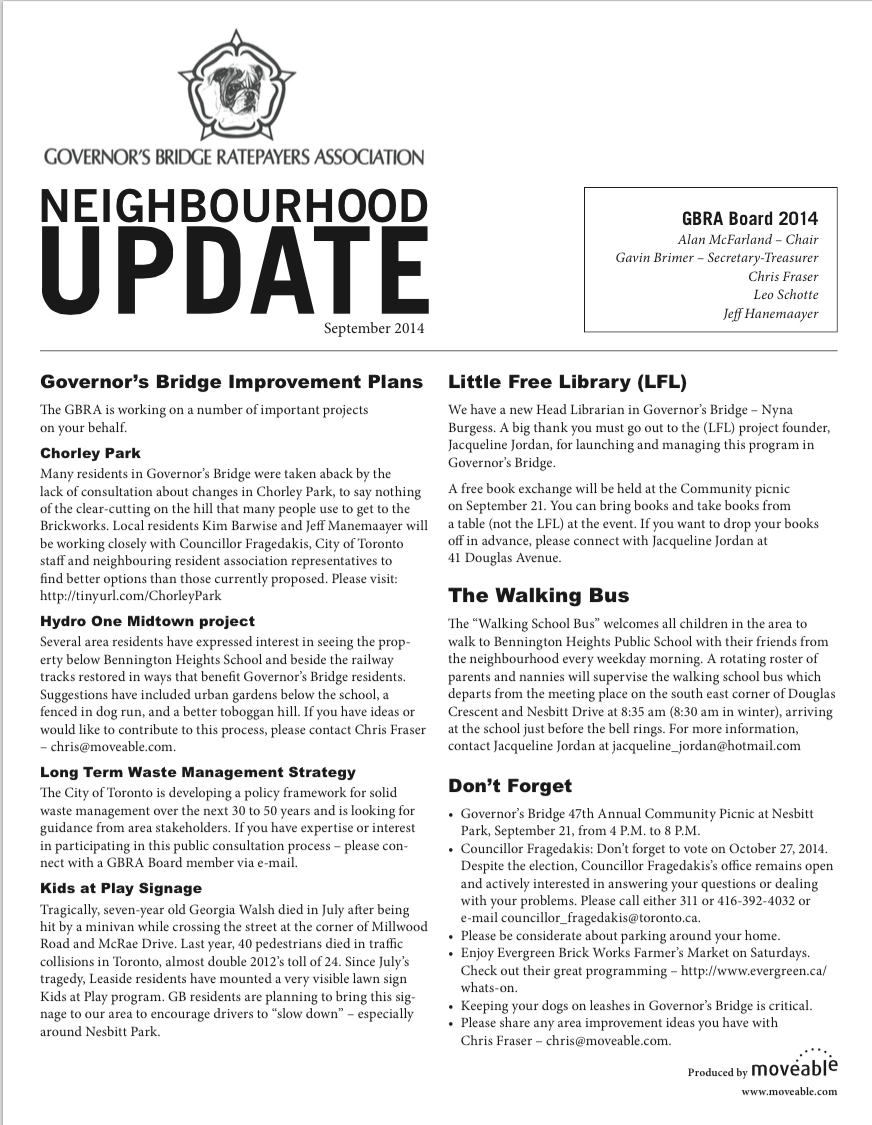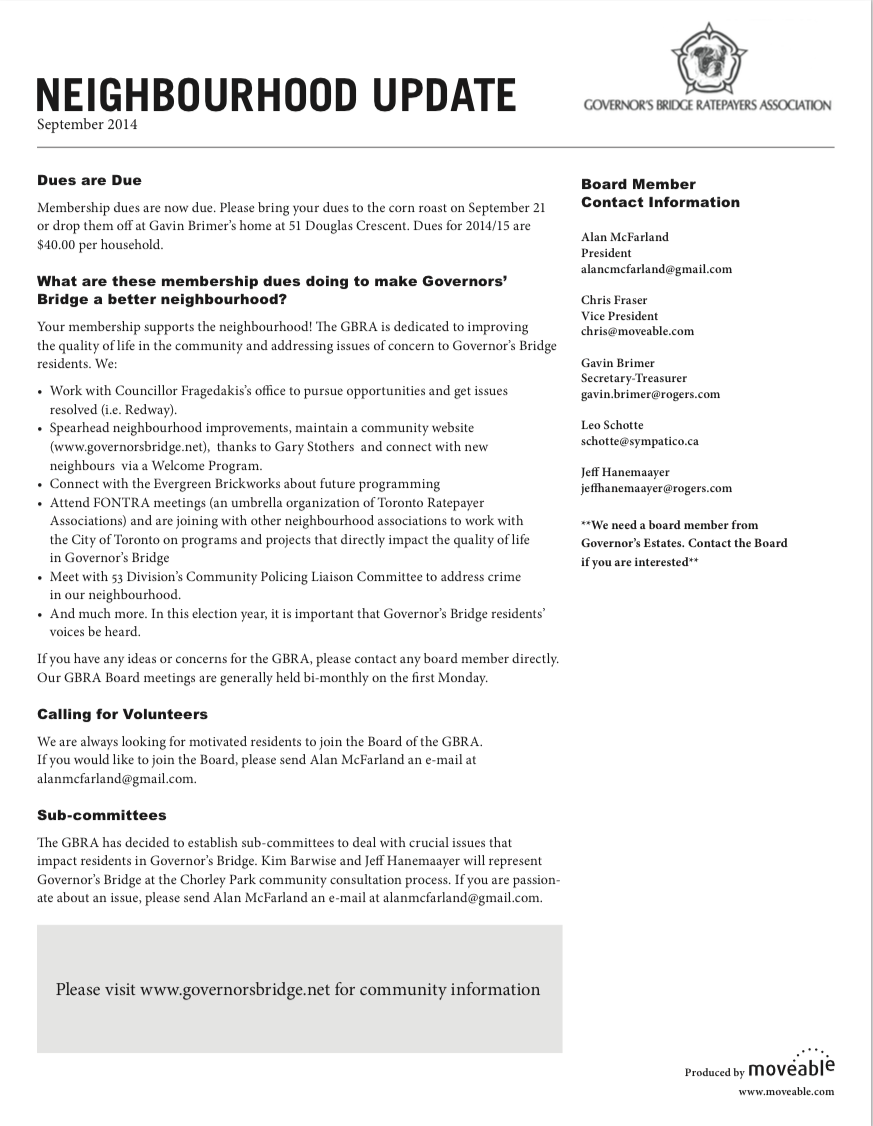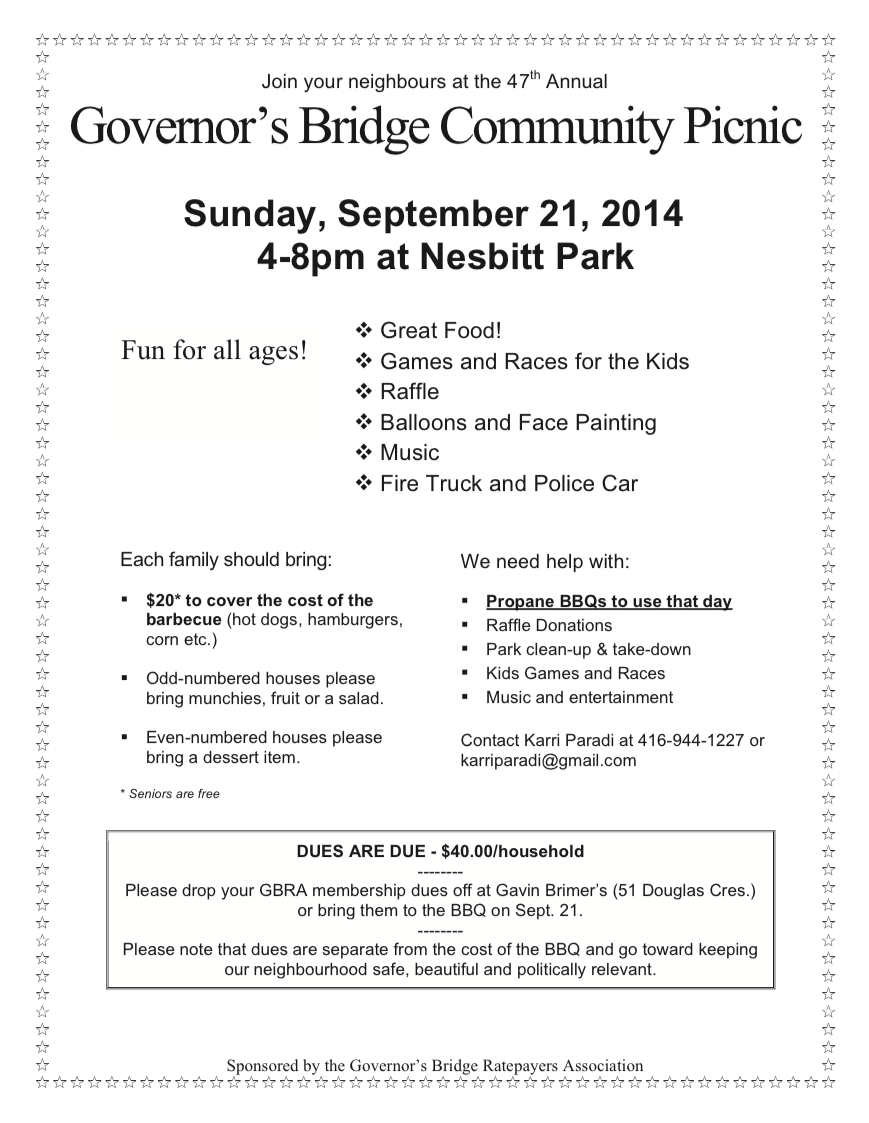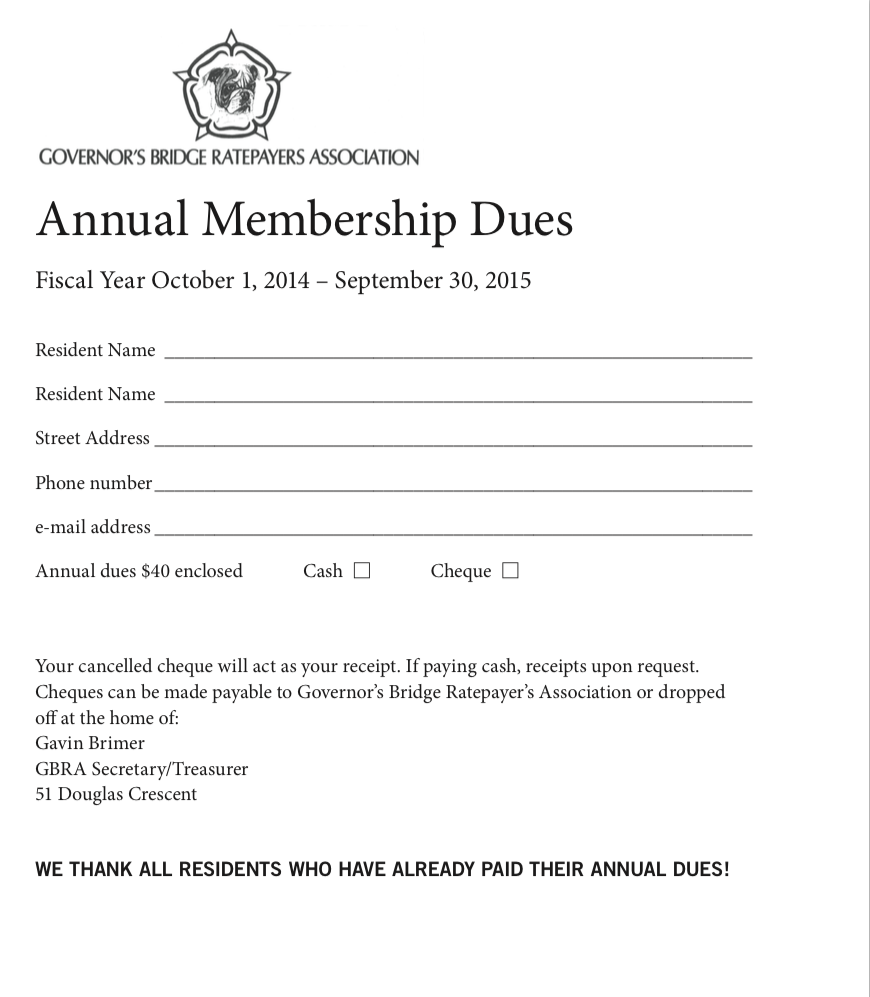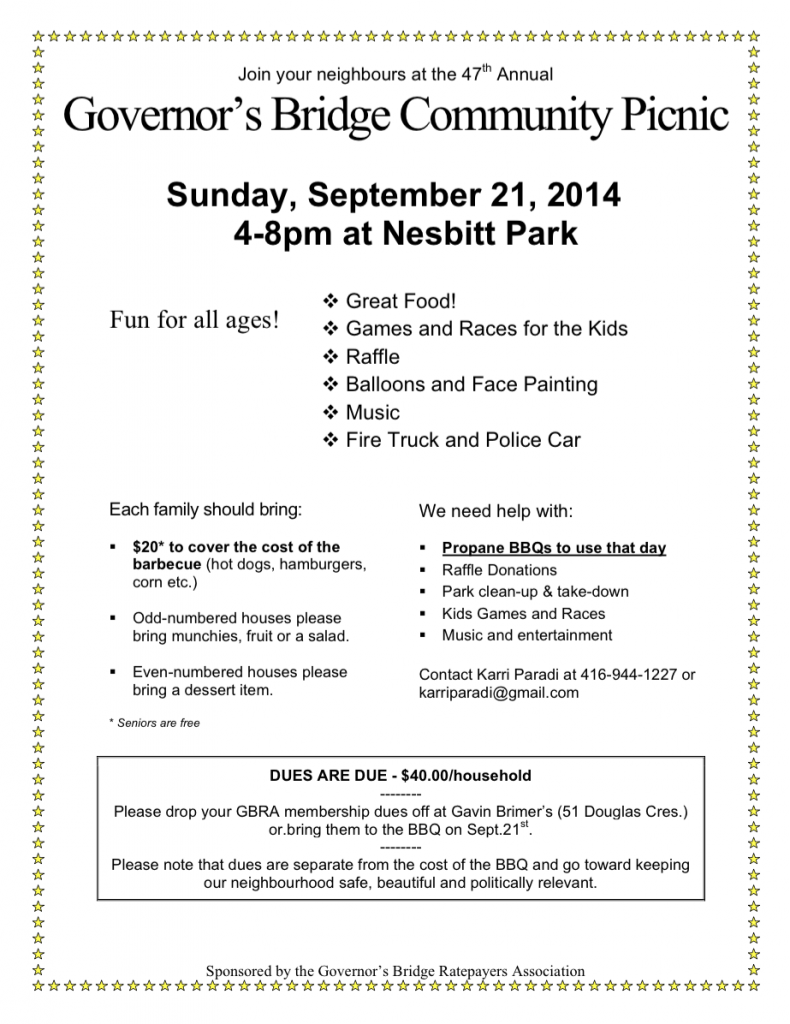Governor’s Bridge Community Picnic
A recent article from the Toronto Star…
Slower speeds a quick fix for Toronto streets: Hume
Recent pedestrian deaths streets renew calls for slower speed limits.

Victor Biro
Police officers attend the scene in Leaside where Georgia Walsh, 7, was fatally struck by a car in July. In the aftermath of her death, Councillor John Parker wants limits reduced to 30 km/h.
Death is a way of life on the streets of Toronto, and that’s just how we like it. We wouldn’t change that if we could.
Oh sure, all hell breaks loose when a pedestrian is hit by a car and killed — especially if the victim is a child — but our refusal to take steps that would minimize if not eliminate the carnage is clear evidence that Torontonians accept these deaths as the price that must be paid for driver convenience.
The car lobby tells us that lowering speed limits and adding traffic lights, stop signs and speed bumps will exacerbate congestion, costing us time and money.
The assumption behind the argument — that as traffic goes, the city goes — is at best misleading; at worst, pernicious nonsense.
Yet when we hear proposals to reduce speed limits on neighbourhood streets to 30 km/h, the outcry is as noisy as it is predictable. When Toronto’s chief medical officer of health, Dr. David McKeown, suggested that in 2012, our loutish mayor, Rob Ford (Open Rob Ford’s policard), pilloried him publicly, suggesting noisily that McKeown wasn’t worth his salary.
More recently, in the aftermath of the killing of 7-year-old Georgia Walsh by a driver in a hurry, Ford called for speed bumps to be removed and speed limits to be increased.
“I believe our streets are safe,” Ford said when asked if he would support cutting speed limits on neighbourhood streets to 30 km/h. “I do not support reducing the speed limit.”
Yet the numbers argue persuasively for speed reductions; get hit by a car going 30 km/h, your chances of getting killed are roughly 5 percent. Get hit by a car travelling 50 km/h, and the chance soars to 85 percent.
How does endangering pedestrians, cyclists and, for that matter, drivers make Toronto a better place to live? How are the deaths of dozens of pedestrians every year good for the city, let alone drivers?
In 2013, 38 pedestrians were killed on Toronto streets, 22 of them seniors. The majority were in the right when struck.
The usual response from Toronto police is an embarrassingly fatuous call for pedestrians to wear brighter coloured clothing or a crackdown on jay-walking.
The tone, of course, is that, yes, it’s unfortunate when another little old lady is run over at some hideous six-lane intersection, but, ultimately, what can you do? It’s just the price of life in the big city.
Except, of course, that it need not be.
The solution to this crisis — and it is a crisis — could be implemented tomorrow morning if the will to do so existed. The techniques are known and their effects understood. Indeed, other cities — Paris, New York, Winnipeg — have successfully lowered speed limits and deaths and not destroyed themselves in the process.
In the aftermath of the Walsh killing, Councillor John Parker (Open John Parker’s policard) wants limits reduced to 30 km/h. It’s doubtful anyone in the Leaside area where she was run over would disagree with such a measure. Yet ask Torontonians in general if they agree with slower traffic across the rest of the city and they’d say no.
The street where they live should be safe, but the rest of Toronto … . My backyard — and my street — is one thing, yours is something else.
Several decades ago, this city and others faced a similar choice about public smoking. Despite all the to-ing and fro-ing, we made the right decision in the end. Today, no one would disagree. The same thing will happen with attitudes to driving. The only question is how quickly we get there.
Christopher Hume can be reached at chume@thestar.ca
